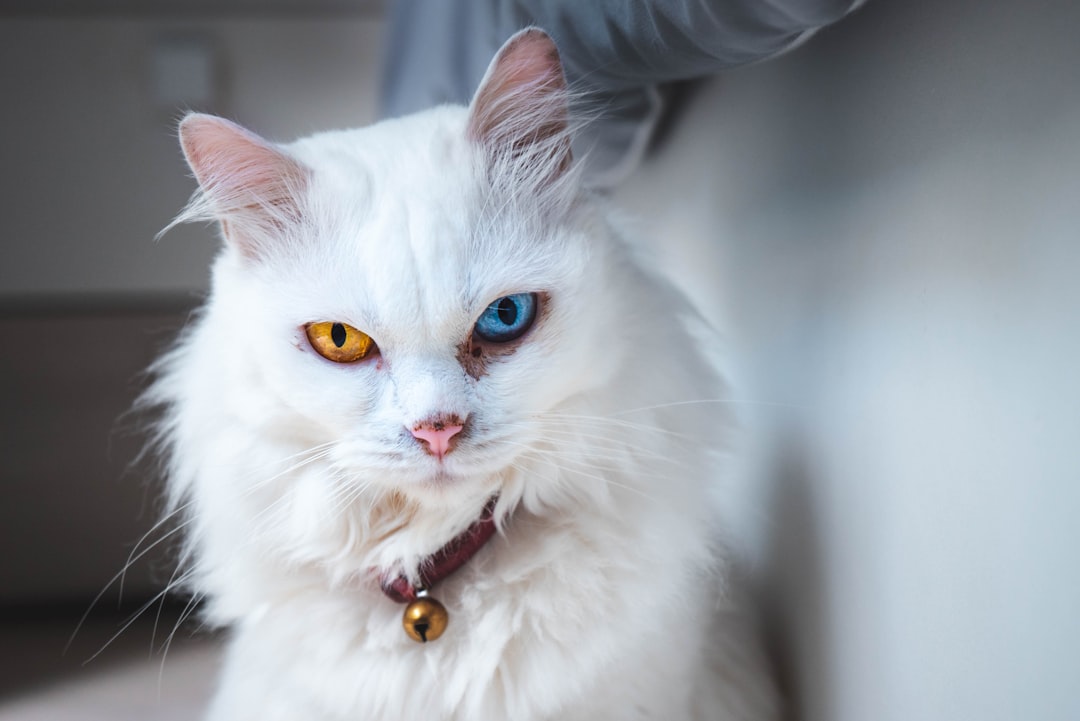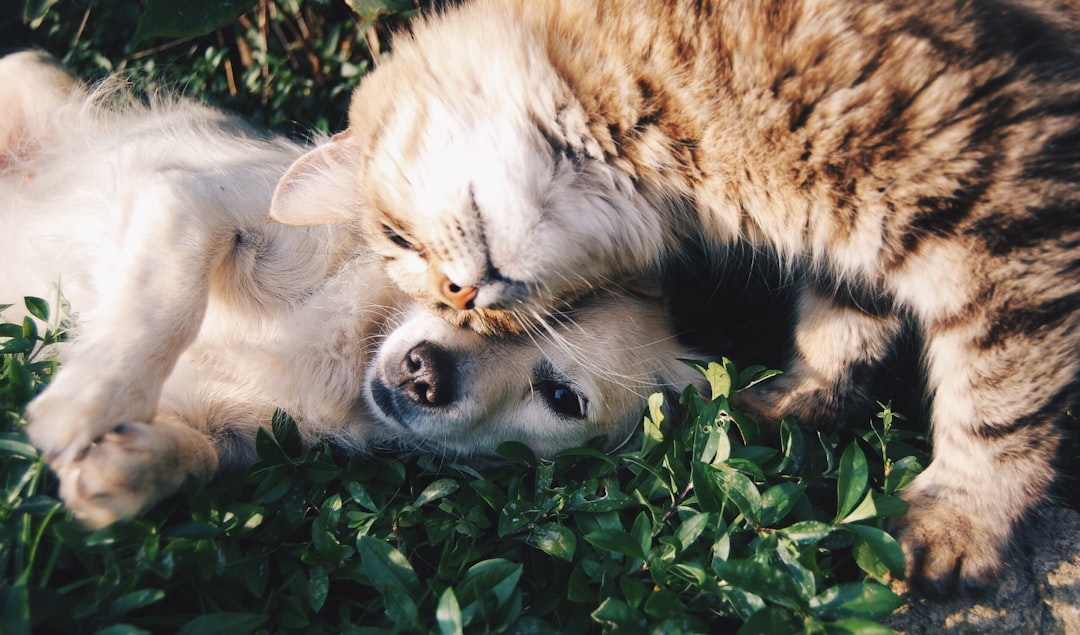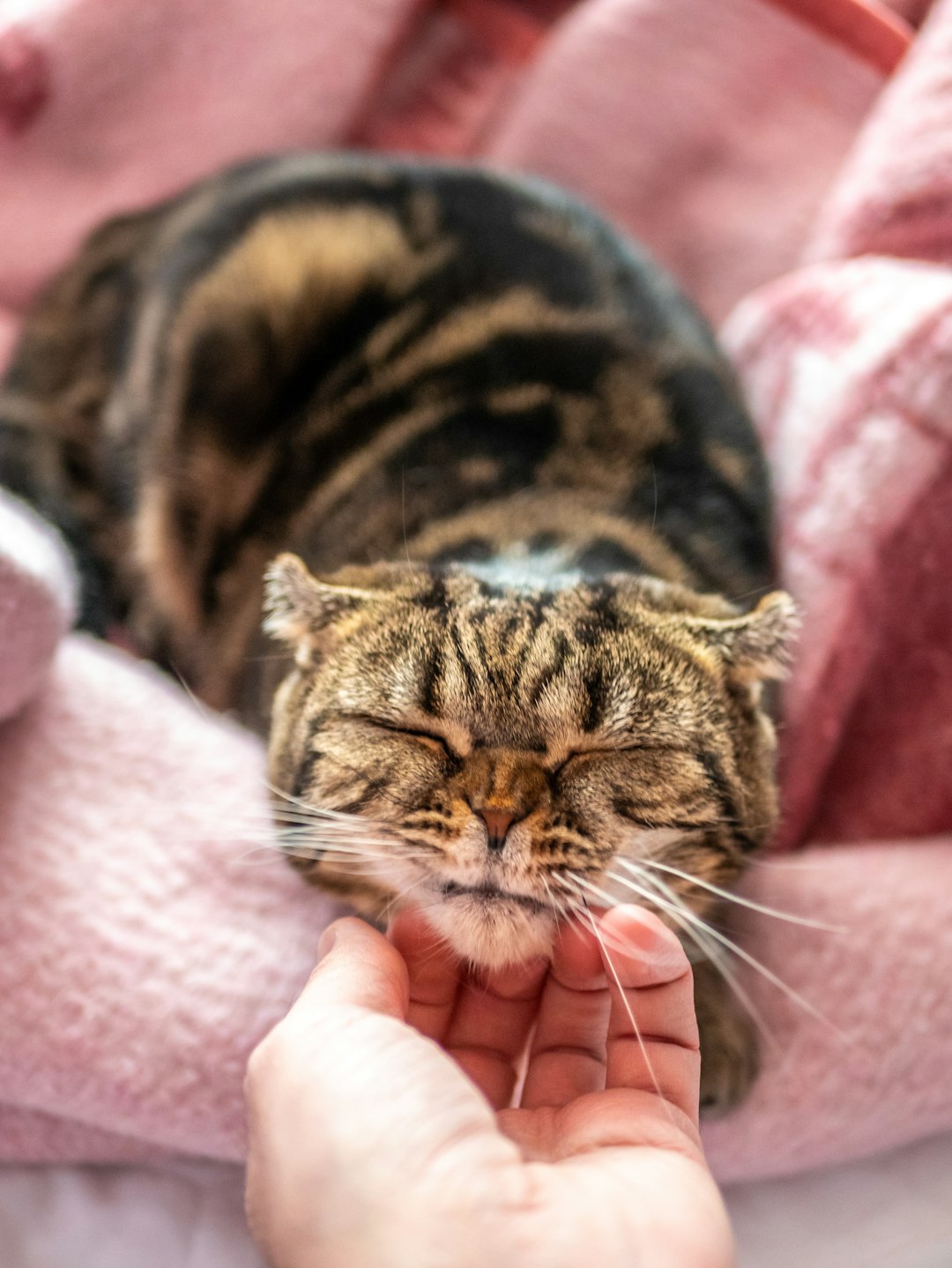Engaging your feline friend in playful activities is essential for their happiness and well-being. Among the myriad of fun options available, the Cat trap game stands out as a delightful choice that nurtures a cat’s natural instincts. This interactive game not only provides mental stimulation but also offers numerous physical benefits, keeping your kitty active and entertained. In this blog post, we will explore the exciting world of the Cat trap game, from setting it up to ensuring safety while playing, and even troubleshooting common challenges. Get ready to transform playtime into an unforgettable adventure for your playful kitty!
What is the Cat Trap Game?
Overview of the Game
The Cat Trap Game is an interactive and engaging activity specifically designed to stimulate your cat’s natural hunting instincts. It offers a fun way to encourage playfulness and exercise, allowing your feline friend to express their innate behaviors in a safe environment. This game involves creating a physical layout that mimics the thrill of hunting, enabling cats to explore, pounce, and venture through various obstacles.
Materials Needed
To set up this playful activity, you’ll need a few simple materials:
| Item | Purpose |
|---|---|
| Cardboard boxes | To create tunnels and hiding spots |
| Small toys or balls | To simulate prey that can be batted around |
| Treats | For enticing kitty participation |
| String or ribbons | For adding interactive elements |
How It Works
The concept is straightforward. You set up a series of boxes and toys in a designated play area to entice your cat. By strategically placing treats or stimulating toys within the traps, you encourage them to explore and interact. As your kitty engages with the setup, they’ll practice their hunting skills while having a blast. The game not only helps reduce boredom but also fosters a strong bond between you and your furry companion, making playtime a delightful experience.
Benefits of Playing the Cat Trap Game
Mental Stimulation for Cats
Engaging your feline friend in bold activities offers essential mental stimulation. As natural hunters, cats have a strong instinct to chase and pounce. The Cat Trap Game encourages them to strategize and problem-solve as they navigate obstacles. This enhanced cognitive engagement helps keep their minds sharp and reduces potential boredom-related behaviors.
Physical Exercise
Regular playtime is crucial for maintaining your cat’s physical health. The dynamic movements involved in this game promote increased activity levels, which is vital for weight management and overall fitness. By incorporating running, jumping, and climbing, you can help your cat develop muscle tone and coordination.
| Aspect | Benefits |
|---|---|
| Weight Management | Helps maintain a healthy weight |
| Muscle Development | Promotes strength and coordination |
| Energy Release | Provides an outlet for pent-up energy |
Bonding Time with Your Pet
The Cat Trap Game isn’t just fun; it strengthens the bond between you and your cat. Spending quality time together fosters trust and affection. As you actively participate in the game, your feline companion learns to associate you with positive experiences, enhancing your relationship. Engaging in play creates a sense of security, making your cat feel cherished and understood.
In summary, playing this engaging game not only benefits your cat’s physical and mental well-being but also deepens the precious connection you share.
Setting Up the Cat Trap Game
Choosing the Right Space
Selecting the right space is crucial when it comes to engaging your kitty in an exciting activity. Look for a quiet area with minimal distractions, such as a corner of your living room or a cozy nook in your hallway. Sufficient space allows your cat to run, jump, and pounce without restrictions. Consider the following factors:
| Factor | Ideal Conditions |
|---|---|
| Lighting | Bright but not harsh |
| Size | At least 4-5 feet of room to play |
| Accessibility | Easily accessible for both you and your cat |
Creating a Safe Environment
Safety should always be your top priority. Ensure that the play area is free from hazards that could injure your cat. Remove sharp objects, cords, or breakable items that could cause accidents. Here are a few safety tips to consider:
- Non-toxic materials: Use safe toys and traps that won’t harm your pet.
- Supervision: Always supervise your cat while playing to quickly address any potential hazards.
- Soft surfaces: Consider placing soft mats or cushions to create a comfy landing pad in case of a tumble.
Setting Up the Trap
Now it’s time to set up the actual trap for your furry friend. You can either purchase specialized traps or create a DIY version using common household items. Here’s a simple setup process:
- Base: Use a fun box or fabric tunnel to create a base.
- Toy placement: Inside the box, place engaging toys or treats to attract your cat.
- Decoy items: Incorporate a few fake mice or feather wands to trigger a hunting instinct.
Once your setup is complete, let your kitty explore! Ensure that they feel comfortable, and watch as they enjoy every moment of this interactive and stimulating playtime.
Different Variations of the Cat Trap Game
Exploring various adaptations of this engaging activity can enhance your feline friend’s experience and keep them entertained for hours. Here are a few creative variations to consider:
Using Toys and Treats
Incorporating different toys and treats into the game can make it more exciting for your furry companion. You can utilize:
| Type | Example |
|---|---|
| Interactive Toys | Laser pointers, feather wands |
| Treats | Dry cat treats, small pieces of cooked chicken |
By using a mixture of enticing toys and tasty rewards, you can encourage your cat to hunt, play, and engage in physical activity. Varying the items used will help maintain your kitty’s interest over time.
Incorporating Obstacle Courses
Transforming your living area into an obstacle course adds another layer of fun to the game. This can involve setting up tunnels, boxes, or platforms for your cat to navigate. Consider the following:
| Obstacle | Purpose |
|---|---|
| Tunnels | Encourage crawling and exploration |
| Platforms | Promote jumping and climbing |
Creating a mini-obstacle course not only stimulates your cat’s instincts but also offers them a sense of adventure, keeping boredom at bay.
Adapting for Multiple Cats
If you have several feline friends, adapt the game to foster teamwork or friendly competition. Some ideas include:
| Activity | Description |
|---|---|
| Team Play | Pair up cats to help each other find treats |
| Individual Challenges | Set up timed tasks to see who can complete them faster |
These variations not only entertain but also enhance social interaction among your cats, making playtime a bonding experience for all.
Safety Tips for Playing the Cat Trap Game
Engaging your feline in a Cat trap game can be a delightful experience, but ensuring their safety should always be a priority. Here are essential safety tips to consider before diving into play.
Supervising Your Cat
Always supervise your cat during play. This ensures that they do not get tangled in any equipment or materials used during the game. Additionally, keeping a watchful eye can help you notice any unusual behaviors or potential hazards.
| Key Points | Details |
|---|---|
| Duration of Play | Limit playtime to about 20-30 minutes to prevent overstimulation. |
| Environment | Ensure the play area is free of obstacles and hazards like sharp objects. |
Avoiding Small Parts
When creating your play setup, be mindful of small items that could pose a choking hazard. Cats are inquisitive creatures, and they may try to swallow or bat around dangerous components. Favor non-toxic, cat-safe materials that are larger and cannot be ingested.
Recognizing Signs of Stress
Watch for any signs that your cat may be feeling overwhelmed or stressed. Indicators such as hiding, excessive vocalization, or swatting can signal that the game is too much for them. Always be prepared to end the game and comfort them if needed.
| Stress Indicators | Response |
|---|---|
| Hiding | Calmly encourage them with gentle words or treats. |
| Aggression | Stop the play immediately and give them time alone. |
Playing safely ensures that your furry friend has fun without any stress or injury. By following these simple tips, you can help create a safe and enjoyable environment for your cat’s lively adventures.
How to Engage Your Cat in the Game
Engaging your feline friend in the Cat trap game is essential for maximizing both their enjoyment and mental stimulation. Here are some effective strategies to entice your cat and keep their interest piqued.
Using Cat-Attracting Scents
One way to captivate your cat is by utilizing cat-attracting scents. Cats are often drawn to pheromones and certain herbal scents. Here are a few options:
| Scents | Description |
|---|---|
| Catnip | Commonly known to induce playful behavior. |
| Silver Vine | An alternative to catnip that may appeal to cats who are indifferent to catnip. |
| Valerian Root | Can stimulate excitement and curiosity in some cats. |
Try incorporating these scents into the game by rubbing them on toys or placing them near the play area.
Varying Game Difficulty
Cats thrive on challenge, so adjusting the difficulty of the Cat trap game can help maintain their interest. You might start by allowing easy access to toys or treats, then gradually increase the complexity:
| Difficulty Level | Description |
|---|---|
| Easy | Simply placing treats in visible traps. |
| Moderate | Hiding treats under covered objects. |
| Hard | Creating multi-layer mazes where cats must figure out how to reach their reward. |
Mixing up the difficulty keeps your cat mentally stimulated and encourages problem-solving skills.
Timing Play Sessions
Timing your play sessions can significantly impact your cat’s engagement. Research indicates that cats are naturally more active during specific times of the day, often during dawn and dusk. Consider these tips:
| Time of Day | Recommended Action |
|---|---|
| Early Morning | Engage in high-energy sessions to channel their morning playfulness. |
| Afternoon | Schedule quieter activities, like puzzle-solving games, during their nap periods. |
| Evening | Play before bedtime to satisfy their need for interaction and exercise. |
By timing your play sessions effectively, you can ensure that gameplay is both enjoyable for your cat and convenient for you.
Common Challenges and Solutions
When introducing the Cat Trap Game into your household, you may encounter some common challenges. However, with the right strategies, these hurdles can be easily managed. Below are some typical issues you might face and their corresponding solutions:
Cats Not Engaging
| Problem | Solution |
|---|---|
| Cat shows little interest in the game | Experiment with different toys such as feathers, laser pointers, or crinkle balls. A variety of stimuli can ignite your cat’s natural hunting instincts. |
| The setup doesn’t engage the cat | Change the environment, possibly by creating new hiding spots or altering the layout of the trap. Cats often respond to novelty. |
Overstimulated Cats
| Problem | Solution |
|---|---|
| Cat becomes overly excited or stressed | Monitor your cat’s behavior; if signs of overstimulation appear, take breaks in between play sessions. This can promote a healthier play environment. |
| Cat exhibits aggressive behavior | Use calming toys or treats. Consider incorporating interactive toys that allow solo play to reduce stress during group activities. |
Managing Competition Between Cats
| Problem | Solution |
|---|---|
| Multiple cats fight over the trap | Utilize separate traps for each cat to ensure every feline has a chance to play without conflict. |
| Jealousy arising from one cat winning | Rotate toys and regularly change activities to prevent favoritism and keep all cats engaged. |
By understanding and addressing these common challenges, you can create a positive and enriching experience for your cat through the Cat Trap Game.
Creating a Play Schedule
Creating a consistent play schedule is essential for maximizing the benefits of the Cat Trap Game. A well-structured routine not only keeps your cat physically active but also mentally stimulated. Here are some key aspects to consider when developing this schedule.
Daily Playtime Goals
To ensure your feline friend remains engaged, establish daily playtime goals. Aim for 15-30 minutes of interactive play each day, split into two or three sessions:
| Play Session | Duration | Purpose |
|---|---|---|
| Morning | 10 minutes | Energize for the day |
| Afternoon | 10-15 minutes | Stimulate during downtime |
| Evening | 15 minutes | Wind down before bedtime |
Mixing Activities
Variety is crucial for maintaining your cat’s interest in the Cat Trap Game. Incorporate a mix of activities to prevent boredom. Some suggestions include:
- Laser pointers for quick sprints
- Balls of yarn for batting and climbing
- Tempting treats hidden in the trap for exploration
Observing Cat Behavior
Finally, your cat’s behavior can guide the development of your play schedule. Pay attention to their peak activity levels, and adjust your sessions accordingly. For example, if your cat appears more energetic at dusk, schedule a longer evening playtime.
By monitoring and adapting your play schedule, you can ensure that each session with the Cat Trap Game remains a delightful and stimulating experience for your playful kitty.
Where to Get Supplies for the Cat Trap Game
Online Retailers
Shopping online provides unmatched convenience when sourcing supplies for your feline friend’s playtime. Websites such as Amazon, Chewy, and Petco offer a wide array of products, often at competitive prices. When choosing online retailers, consider factors like delivery speed, customer reviews, and return policies. Here’s a quick comparison table for popular online options:
| Retailer | Delivery Time | Return Policy | Customer Ratings |
|---|---|---|---|
| Amazon | 1-2 days | 30 days standard | 4.5/5 |
| Chewy | 1-3 days | 60 days for unused | 4.7/5 |
| Petco | 2-5 days | 30 days for in-store | 4.6/5 |
Local Pet Stores
Visiting local pet stores not only supports small businesses but also allows you to examine supplies in person. Many stores stock essential items like interactive toys, tunnels, and treats, suitable for creating an engaging play environment. Moreover, staff members often provide valuable advice tailored to your pet’s preferences and needs. Don’t hesitate to ask for recommendations—experts can help you find the best options available.
DIY Options
Crafting your own supplies can be both fulfilling and cost-effective. Using everyday materials, you can create engaging toys that stimulate your cat’s curiosity. For instance, cardboard boxes, string, and paper balls can be transformed into exciting play things. Check online platforms like Pinterest for countless creative ideas. Here’s a simple DIY toy comparison:
| DIY Toy | Materials Needed | Benefits |
|---|---|---|
| Cardboard Maze | Empty boxes, tape | Customizable and stimulating |
| Wand Toy | String, feather | Encourages jumping and pouncing |
| Paper Ball Toy | Scrap paper | Promotes hunting instincts |
Regardless of where you acquire your supplies for the Cat trap game, ensure they’re safe, durable, and engaging to keep your cat entertained and active.
Frequently Asked Questions
What is the Cat Trap Game and how does it work?
The Cat Trap Game is an interactive and engaging activity designed specifically for pets, particularly cats, to stimulate their natural hunting instincts and provide mental enrichment. The game involves setting up a trap or a series of obstacles that your cat has to navigate around or through to reach a treat or toy. It typically includes various elements like tunnels, boxes, or feathers, which encourage your cat to explore and interact. It’s an excellent way for your cat to exercise both physically and mentally while having fun.
What materials do I need to set up the Cat Trap Game?
To set up the Cat Trap Game, you’ll need a few basic materials that can be easily found at home or purchased from pet shops. Common items include cardboard boxes, paper bags, tunnels, and lightweight toys such as balls or feathers. You may also want to have treats or catnip on hand to motivate your kitty. Ensure that all materials are safe, without sharp edges or small parts that could be swallowed, to provide a safe play environment.
Can the Cat Trap Game be played indoors and outdoors?
Yes, the Cat Trap Game can be played both indoors and outdoors, making it a versatile activity for your feline companion. When playing indoors, you can design a maze or obstacle course using furniture and household items. For outdoor play, ensure the area is safe and enclosed, allowing your cat to roam and explore without the risk of escape or encountering potentially dangerous wildlife. Always supervise your cat to ensure their safety during playtime.
Is the Cat Trap Game suitable for all cat breeds?
The Cat Trap Game is generally suitable for all cat breeds, as it can be tailored to fit the individual needs and play styles of each cat. Some breeds may be more adventurous, while others might prefer a more relaxed approach to play. Adjust the difficulty of the traps and obstacles based on your cat’s age, health, and personality. It’s essential to observe your cat’s behavior during the game and modify it to ensure they are engaged and enjoying the experience.
How often should I play the Cat Trap Game with my cat?
It is recommended to play the Cat Trap Game with your cat several times a week to keep them physically and mentally stimulated. The frequency can vary depending on your cat’s energy level and interest in the game. Short, engaging sessions of around 15 to 20 minutes can be beneficial and prevent overstimulation. Combining this game with other forms of play can help maintain your cat’s overall health and happiness.



